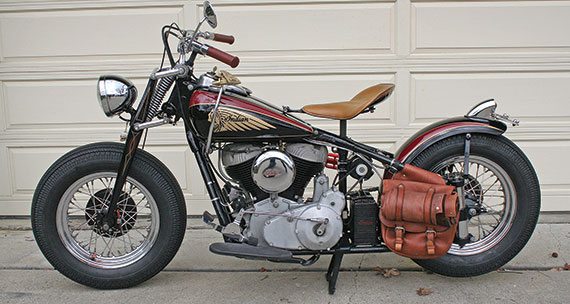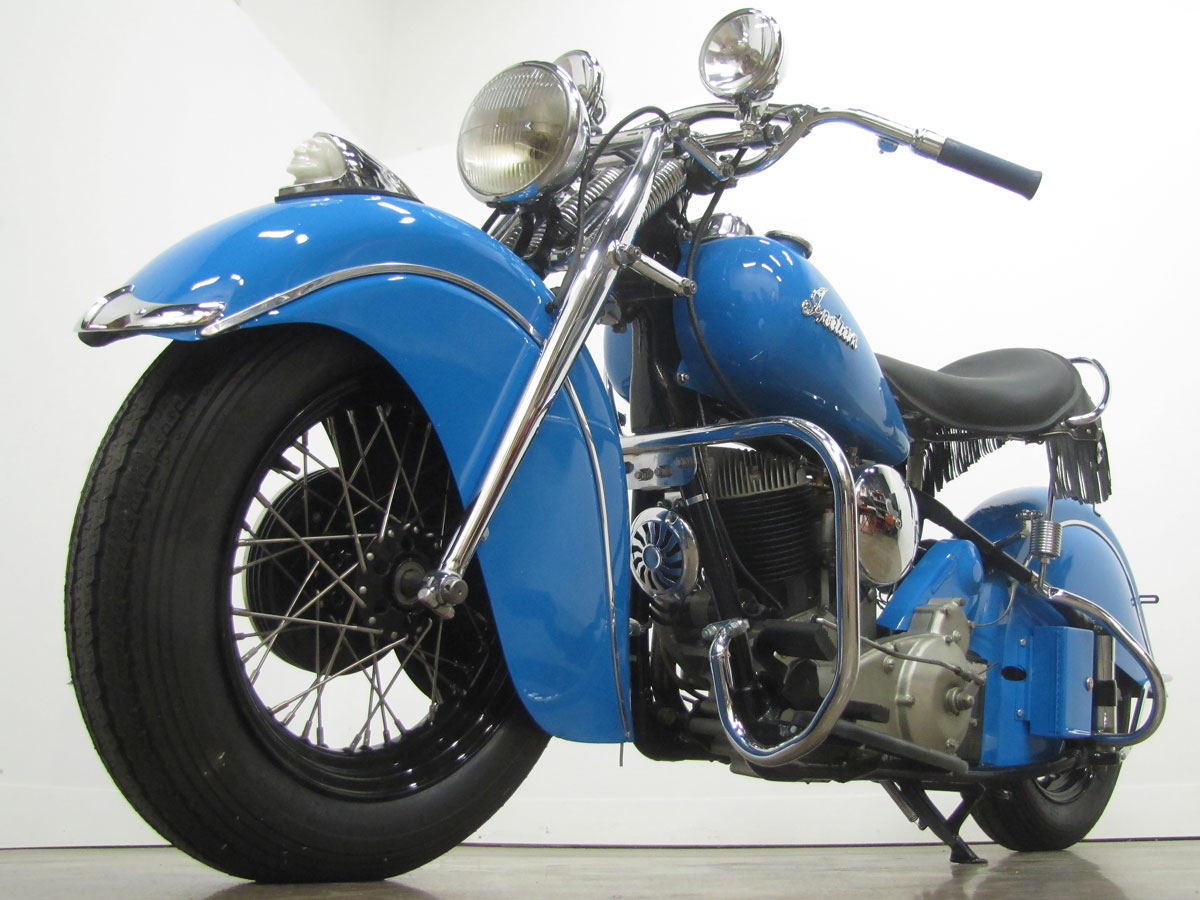

“It also gave me a passion for bikes built pre-War,” Robbins said to me in an email. Burniston was just starting to offer his specialties as a girder fork repairman, and under his tutelage, Robbins learned the engineering and welding skills required for this line of work. Then, in 1992 he met and began working with Steve Burniston of ELK Engineering. By the time he was 16 he’d left school and was working for local bike shops in East Sussex. Jake Robbins of Jake Robbins Vintage Engineering started with motorcycles when he was 12 years old, and with no money, had to learn to fix them himself. a man who has taken it upon himself to be a girder fork guru. Anyone currently working on a basket case machine that is absent the girders, such as an Ariel or Triumph built in the 1930s, can attest to how scarce these forks really are.

Regardless of make or model – from basic to exotic – original examples of vintage motorcycle girder forks in any type of condition are today quite a rare find. A girder could feature plenty of length, without suffering much of the flexing in extended telescopic fork tubes. In fact, that’s why many custom chopper builders in the late 1960s and 1970s preferred them to a telescopic front end. Thanks to the triangulated tube side blade construction, the girder is remarkably strong. Friction damping is often adjusted using a knurled knob or large, intricate looking wing nut - ideally something turned easily with a gloved hand. The whole arrangement is kept together with side links and adjustable spindles, and a single spring between the fork and the top crown provides a limited range of suspension travel.ĭamping to affect compression and rebound is obtained through a friction system acting on the lower links. This pivots on four points – two on the girder itself, one at the lower steering tube and one at the top crown. Webb forks feature rigid sections of triangulated tubes (one on each side, commonly called a ‘blade’) that make up the main girder. and Triumph, made their own and these designs closely resemble the Webb model. Some motorcycle makers, Velocette, for example, bought in Webb forks to fit their range of machines. The girder fork, whether of a simple or more intricate design, was the most common front suspension system found on pre-Second World War motorcycles.īy the mid teens most motorcycles were fitted with a girder, and manufacturers included Brampton, Castle, Druid and Webb. RADD proved to be too much technology, and one that motorcyclists simply didn’t buy. Affixed to the front of a C-shape main frame, one arm is for suspension, and the other for braking and steering. With hub-centre steering, the system is essentially two swing arms on the left side of the front wheel. Unlike Britten’s front end, which does resemble a girder, RADD is completely different. Instead of steel tubes, Britten’s girder was constructed of lightweight carbon fibre and Kevlar components, all suspended by a single Ohlins shock.Īnd, Yamaha licenced the rights to James Parker’s RADD (Rationally Advanced Design Development) front end in 1990, and built the GTS1000 from 1993 to 1996 around the alternative suspension system. Race icon John Britten experimented, successfully, with a girder design on his V1000. The visible fork tubes do not provide suspension, rather they hold the front wheel in place and provide steering inputs. Telelever uses an A-arm swingarm that pivots from the engine with a single monoshock attached to the A-arm and the motorcycle frame. BMW’s system doesn’t differ too much from traditional girder theory, but the hardware has been updated. Witness some of the modern examples of the technology, including BMW’s Telelever.

Maybe that’s why the girder might just be due for a comeback. It did lack an appreciable amount of travel, but properly set up a girder provided a light, lithe, and sporty ride. It was stronger, wouldn’t dive under braking, and was less prone to stiction. Shame, really, because the girder was a better system, especially in the early days of the telescopic. So absolute was the adoption of the new technology that owners of motorcycles from the 1930s were buying telescopic units and binning their girder forks. When manufacturers in the 1940s replaced what was the industry standard girder fork with the hydraulically damped telescopic unit motorcycles stepped into the modern age. Jake Robbins (right) with son William and their Brough Superior exact replica made in England fork.


 0 kommentar(er)
0 kommentar(er)
